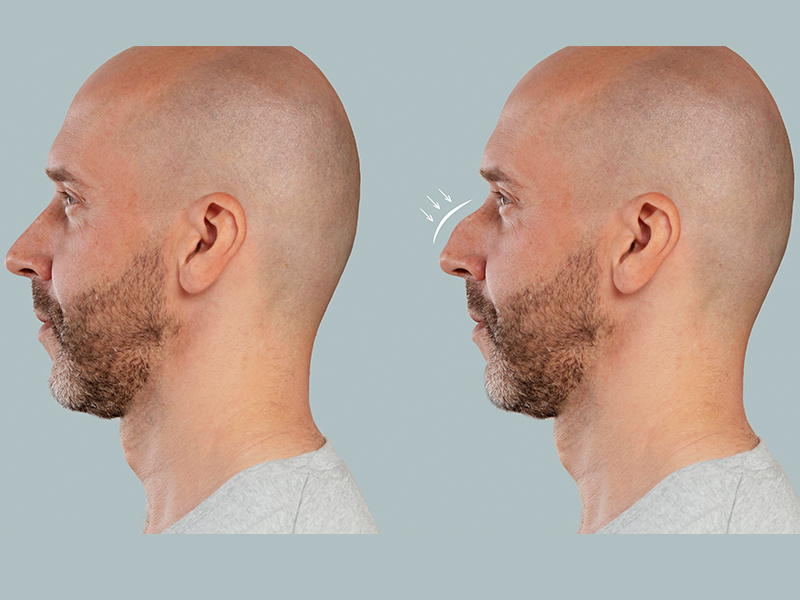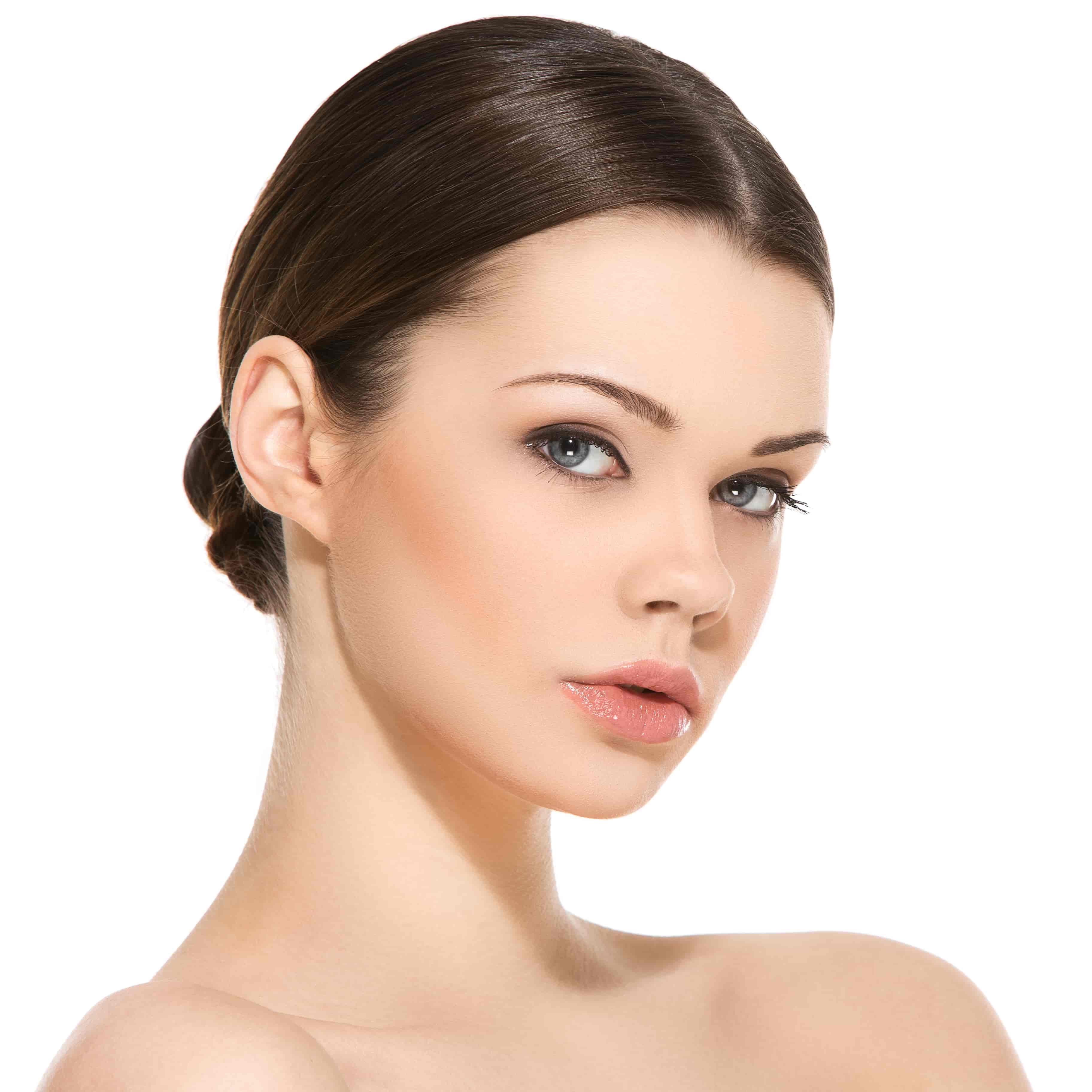What is Rhinoplasty?
Rhinoplasty is a surgical method applied to make the nose more functional and aesthetically pleasing. Rhinoplasty, also known as nose aesthetic surgery, has been applied by many people in recent years.
How Rhinoplasty Is Performed?
In this process, which is applied quite frequently, the structure of the skin layer, cartilage and bones is changed and restructured by removing deformities.
What Are the Types of Rhinoplasty?
Rhinoplasty can be performed as both closed and open surgery. These procedures also include revision, unbuffered and non-incisional methods. The procedures take an average of 2 hours.

Closed Rhinoplasty; In this method, all incisions are made through the nose under general anesthesia and there are no stitches. This method, which has been preferred quite frequently in recent years, provides much less damage to the skin and soft tissue.
Open Rhinoplasty; In this method, a small incision is made in the nose under general anesthesia and the procedure is performed through this incision. The type of technique is determined according to the wishes of the patient and the condition of the procedure to be applied.
Revision Rhinoplasty; this method is applied in order to eliminate some negative conditions from previous rhinoplasty surgery. A perfect result may not be obtained in every patient's rhinoplasty surgery. Revision is required in approximately 5% or 15% of people who have surgery. Revision surgery is divided into two as minor and major. Minor revision has smaller and less obvious errors. These can be removed with an operation of 30 or 40 minutes. However, major revision is applied to obvious deformities. Removal of the deterioration caused by the previous surgery can be corrected between 3 hours and 6 hours.
Unbuffered Rhinoplasty; In this method, a special tool called an intranasal stapler is used. Since the tampon used in other nose surgeries is not used, it is defined as unbuffered rhinoplasty. In this procedure, the patient's nose is not blocked, so the patient can breathe quite comfortably. No additional cleaning is required. There is no need to remove stitches after the operation because the stitches dissolve on their own after an average of 10 days.
Nose Tip Rhinoplasty; In this method, closed surgery technique is used. Intervention is made through the nostrils of the patient. With the procedure, the patient's nose tip is shaped and made more aesthetic. It can be applied to people who have an extremely sharp or wide nose tip.

To whom Rhinoplasty is Applied?
This procedure can be applied as a result of asymmetry, deviation, deformation and injuries in the nose. Congenital problems (arch appearance, low nose, etc.) can also be eliminated with this aesthetic method. It is also a method that can be applied in cases such as sinusitis, breathing difficulties and nasal flesh. Since some people are not satisfied with their nose, they may apply to this procedure for purely aesthetic purposes. Rhinoplasty can be performed after the age of 16 for women and after the age of 18 for men.
What are the Advantages of Rhinoplasty?
-
The patient's self-confidence increases.
-
Deformities in the nose are eliminated and a more aesthetic appearance is obtained.
-
Respiratory problems caused by bone and cartilage curvatures are eliminated.
-
It is ensured that the problem of snoring is prevented.
-
There is no scar in the closed method.
-
It is possible to obtain a natural and pleasant appearance.
Preparation Before Rhinoplasty?
After a detailed physical examination and tests, photographs of the nose can be taken and the types of interventions that can be done with the help of a computer and their possible results can be shown to the patient with multidimensional pictures. As a result of patient expectations and all evaluations, the most appropriate procedure for the patient is decided.
Before the surgery, if there are drugs used by the patient for other diseases, what they are is examined. It is checked whether there is a negative effect that the drugs may cause. In this way, a safer operation is performed. Especially if the patient is using blood thinners, he/she should stop taking these drugs two weeks before the surgery. Because the drugs he/she uses can increase bleeding during and after the procedure. He/she can only use drugs allowed by the surgeon. At the same time, natural herbal medicines and supplements should be avoided.
If herpes or upper respiratory tract infection is present, preoperative treatment should be performed.
If the patient is a smoker, he/she should stop smoking at least 2 weeks before the surgery, as it will adversely affect the healing process and increase the risk of infection.
Before the rhinoplasty surgery, the patient should not eat anything for 8 hours. The reason for this is to prevent the occurrence of conditions such as nausea and vomiting.
Points to consider After Rhinoplasty?
-
Internal dressings stay in place for several days after rhinoplasty. A small amount of bloody discharge may come from the nose 6-8 hours after the procedure.
-
In the first days, the patient may have bruises and swelling around the eyes. It heals in 1 week-10 days. In order to reduce bleeding and prevent swelling, the patient should lie in a semi-sitting position.
-
When the dressings removed after the surgery, the mucus accumulated inside can flow out. Therefore, gauze, which has an absorbent function, is also placed. The tampon in the nose is usually removed within two to three days. Silicone with an air channel at the end or a new generation of melting comfort pads that do not need to be removed can also be used in the procedures. On the other hand, methods that do not use buffers can also be applied.
-
Ice can be applied if recommended by the doctor.
-
You can take a shower 48 hours after the surgery. But the water should never be too cold or too hot. The use of shampoo or soap is not a problem as long as it does not touch the nose area.
-
After the procedure, the patient's sense of smell may decrease, but this situation improves after a while. It is natural to experience congestion and breathing problems in the first 3 months.
-
The patient's sneezing does not harm his/ her nose. However, it can cause bleeding. Comfortable clothes with buttons on the front should be preferred.
-
You can return to daily life after 1 week. It may take 3-4 weeks for the stitches in the nose to heal and the edema to decrease. If you are doing sports, it is recommended that you take a break from exercises that require effort for a while.
-
In order to prevent constipation, liquid and soft foods should be preferred, especially in the first days. It is necessary to brush the teeth with soft movements.
-
Nasal massage, as recommended by your doctor, can help tissue healing.
-
Constipation should be avoided. Because if the patient is constipated, he/she has to force himself/herself and strain. Therefore, it is recommended to focus on fiber foods.
-
It is necessary to be protected from direct sunlight for at least one month after the operation. It is absolutely necessary to use sunscreen and not to go to places such as baths and saunas. The use of glasses should be avoided for 1-3 months.
-
It is important to take a break from smoking for a while after the procedure in terms of accelerating the recovery.
-
It is recommended that the comments made by the environment in the first period should not be taken into account. When the things to be applied are done and regular checks are carried out, no problems will occur. Within 6-12 months, the swelling will decrease and the shape of the nose will become clearer.
Rhinoplasty Prices
Rhinoplasty prices in Izmir, Turkey vary according to the methods of surgery to be applied to the patient. You can contact us immediately to have detailed information and to be examined.









